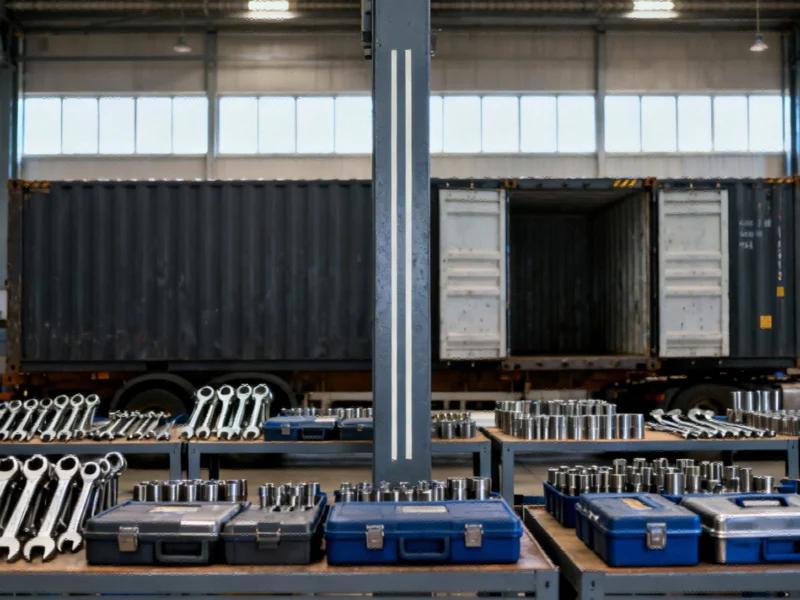American consumers are facing sticker shock at the grocery store as beef prices continue their relentless climb, with ground beef reaching nearly $8 per pound and broader economic concerns weighing on consumer confidence. The sustained price increases reflect deeper supply chain challenges that have plagued the cattle industry throughout 2025.
The latest Department of Agriculture data reveals lean and extra lean ground beef now averages $7.95 per pound, representing an 8% increase since January and part of a broader 14% surge over the past year. This trend aligns with recent analysis showing beef prices hitting record highs amid ongoing supply chain pressures that show no immediate signs of abating.
Multiple Factors Converge in Price Surge
Industry experts point to a perfect storm of challenges affecting beef production. “Drought, inflation, labor shortages and market instability have created significant cattle shortages,” explained Conner Hackett, general manager at Stemple Creek Ranch in California, in comments cited by MarketWatch. The situation became particularly dire during the summer months, with weekly cattle slaughter in late July and August slowing to its lowest point in a decade according to USDA reports.
The production challenges extend beyond domestic concerns. Beef exports have taken a substantial hit, with July shipments totaling 211 million pounds—a 19% year-over-year decline. While beef imports increased 13% year-over-year in June, this has provided only partial relief for the strained market. The USDA has responded by issuing slightly downward production forecasts for 2025, suggesting the supply constraints may persist.
Broader Economic Context
Beef represents just one component of rising food costs that are affecting American households. The consumer price index for all food increased 0.4% month-over-month in August, with beef and veal, other meats, and fresh vegetables experiencing the most significant price jumps. Coffee has actually outpaced beef in terms of inflation, rising more than 20% in the past year as tariffs affect major producing countries.
These price increases are taking a toll on consumer sentiment. The University of Michigan’s October survey showed economic outlook hitting its third consecutive declining month, falling to 55 and below Wall Street’s consensus of 55.8. Americans now expect inflation to rise to 4.6% over the next year, reflecting growing concerns about purchasing power and economic stability.
Technological Solutions in Related Industries
While the beef industry grapples with traditional supply chain challenges, other sectors are leveraging advanced technology to improve efficiency. The manufacturing world is seeing significant advancements in AI tools that empower creators and industrial designers, potentially offering lessons for agricultural optimization. Similarly, recent partnerships between major tech companies are driving more efficient AI systems that could eventually benefit food production logistics.
Financial Markets Respond
The financial sector continues to adapt to changing consumer patterns and economic conditions. Companies across various industries are securing significant funding, as demonstrated by Chobani’s recent $650 million funding round at a $20 billion valuation, showing investor confidence in food-related businesses despite market challenges. Meanwhile, financial institutions are developing new tools for managing recurring expenses, including Mastercard-powered subscription management platforms that could help consumers track rising food costs.
Global Economic Interconnections
International markets continue to influence domestic economic conditions. China’s market performance and strategic business moves affect global trade patterns and commodity prices, while AirAsia’s exploration of strategic Vietnam investments illustrates how companies are adapting their global footprints in response to economic pressures.
Looking Ahead
As consumers adjust their shopping habits and budgets in response to persistent food inflation, industry observers will be watching for any relief in cattle supply constraints and potential policy responses. The complex interplay of environmental factors, labor markets, and international trade dynamics suggests that achieving price stability in the beef market will require coordinated solutions across multiple sectors of the economy.
Based on reporting by {‘uri’: ‘forbes.com’, ‘dataType’: ‘news’, ‘title’: ‘Forbes’, ‘description’: ‘Forbes is a global media company, focusing on business, investing, technology, entrepreneurship, leadership, and lifestyle.’, ‘location’: {‘type’: ‘place’, ‘geoNamesId’: ‘5099836’, ‘label’: {‘eng’: ‘Jersey City, New Jersey’}, ‘population’: 247597, ‘lat’: 40.72816, ‘long’: -74.07764, ‘country’: {‘type’: ‘country’, ‘geoNamesId’: ‘6252001’, ‘label’: {‘eng’: ‘United States’}, ‘population’: 310232863, ‘lat’: 39.76, ‘long’: -98.5, ‘area’: 9629091, ‘continent’: ‘Noth America’}}, ‘locationValidated’: False, ‘ranking’: {‘importanceRank’: 13995, ‘alexaGlobalRank’: 242, ‘alexaCountryRank’: 114}}. This article aggregates information from publicly available sources. All trademarks and copyrights belong to their respective owners.



